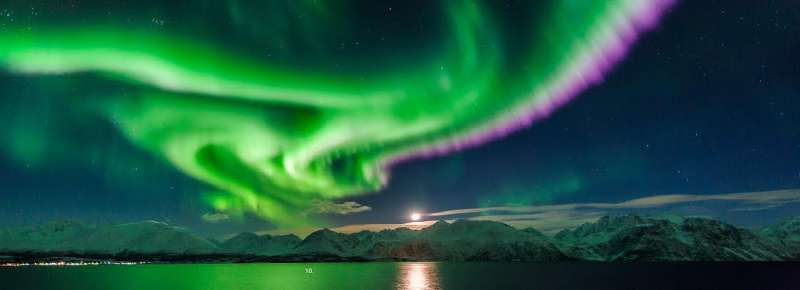Team produces unique simulation of magnetic reconnection

Jonathan Ng, a Princeton University graduate student at the U.S. Department of Energy's (DOE) Princeton Plasma Physics Laboratory (PPPL), has for the first time applied a fluid simulation to the space plasma process behind solar flares northern lights and space storms. The model could lead to improved forecasts of space weather that can shut down cell phone service and damage power grids, as well as to better understanding of the hot, charged plasma gas that fuels fusion reactions.
The new simulation captures the physics of magnetic reconnection, the breaking apart and snapping together of the magnetic field lines in plasma that occurs throughout the universe. The simulations approximate kinetic effects in a fluid code, which treats plasma as a flowing liquid, to create a more detailed picture of the reconnection process.
Previous simulations used fluid codes to produce simplified descriptions of reconnection that takes place in the vastness of space, where widely separated plasma particles rarely collide. However, this collisionless environment gives rise to kinetic effects on plasma behavior that fluid models cannot normally capture.
Estimation of kinetic behavior
The new simulation estimates kinetic behavior. "This is the first application of this particular fluid model in studying reconnection physics in space plasmas," said Ng, lead author of the findings reported in August in the journal Physics of Plasmas.
Ng and coauthors approximated kinetic effects with a series of fluid equations based on plasma density, momentum and pressure. They concluded the process through a mathematical technique called "closure" that enabled them to describe the kinetic mixing of particles from non-local, or large-scale, regions. The type of closure involved was originally developed by PPPL physicist Greg Hammett and the late Rip Perkins in the context of fusion plasmas, making its application to the space plasma environment an example of fruitful cross-fertilization.
The completed results agreed better with kinetic models as compared with simulations produced by traditional fluid codes. The new simulations could extend understanding of reconnection to whole regions of space such as the magnetosphere, the magnetic field that surrounds the Earth, and provide a more comprehensive view of the universal process.
More information: Jonathan Ng et al, Simulations of anti-parallel reconnection using a nonlocal heat flux closure, Physics of Plasmas (2017). DOI: 10.1063/1.4993195
Journal information: Physics of Plasmas
Provided by Princeton Plasma Physics Laboratory



















